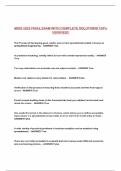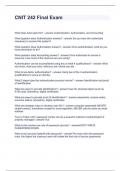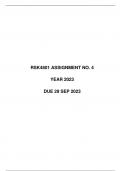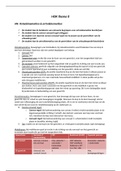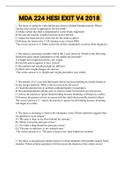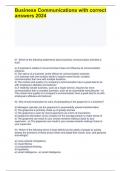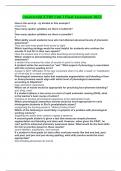Muziek van de twintigste eeuw
Les 1-3
Inleiding: Modernisme of maximalisme?
• Definities van modernisme: Georgina Born
Þ 1) afwijzen van de traditie:
• This general feature of modernist arts is often referred to as the
negative aesthetic or simply negation, since the prime motive is a
negation of the principles of the previous tradition… In all the
modernist arts there thus arose a self-conscious experimentation with
form founded on a sense of the necessity of revolutionizing the
“language” of art itself.”
• Vb: Alban Berg: vioolconcerto
Þ 2) technologie
• “Modernist scientism arose as early as the 1880s, as shown in the
work of Seurat and Cézanne. Both were centrally concerned with
changing the basis of art perception and were influenced by its
scientific study. Technologies affected not only the artistic means of
production and reproduction. They were also a new aesthetic stimulus
in terms of the subject matter of art, for example in the way that cubist
and futurist abstractions recall the forms and movement of machines.”
• Vb: Olivier Messiaen, Turangalilia symfonie: deel 6: ondes martenot
Þ 3) theoretisering van de praktijk
• “Art theory and practice were of course linked in earlier periodes, but
modernist artists attempted to solve the crisis in traditions which they
faced by foregrounding theory to construct and determine their
practice.”
• Vb: manifest van Pierre Boulez: The creator’s intuition alone is
powerless to provide a comprehensive translation of musical
invention. It is thus necessary for him to collaborate with the scientific
research worker in order to envision the distant future, to imagine
less personal, and thus broader, solutions… The musician must
assimilate a certain scientific knowledge, making it an integral part of
his creative imagination… Technology and the composer:
collaboration between scientists and musicians is, therefore, a
necessity. Our grand design today is to prepare the way for their
integration and, through an increasingly pertinent dialogue, to reach a
common language. The effort will either be collective or it will not be
1
, at all. What is absolutely necessary is that we should move towards
global, generalizable solutions. (1976)
Þ 4) politieke retoriek
• “They sought no broader social engagement or political effect. In their
formalism, they thus disdained an involvement with the broader
social or political dimensions of culture, preferring critique to be
confined within the artwork itself.”
• Vb: Anton Webern, variationen für Orchester opus 30
Þ 5) rationalisme en irrationalisme
• “While it is difficult to stabilize this oscillation and to gauge which side
exerted the greater force, it is modernist rationalism that was so well
allied to the importion of science and technology into art, while
modernist theoreticism promoted the fusion between these
elements.“
• vb: Arnold Schönberg: Erwartung
Þ 6) ambivalentie t.o.v. populaire cultuur
• “Tellingly, the construction of difference becomes an active
antagonism toward and repudiation of mass culture in the writings of
major modernist critics such as Clement Greenberg and Theodor
Adorno. Popular culture may thus be considered the “other” of
modernism, with “authentic” folk and “primitive,” “exotic” forms more
acceptable and enduring as influences than urban and commercial
forms.”
• Vb: Darius Milhaud, Scaramouche
• Tegenreacties
Þ Terry Riley: in C (1964)
Þ Philip Glass: postminimalisme
Þ Arvo Pärt: Tabula Rasa (1977)
Þ Definitie van Richard Taruskin
• “to make an ism out of being modern is on the face of it paradoxical,
since if modern simply means “of or pertaining to present and recent
time” (as one dictionary defines it), then everyone is modern by
default, and always has been, since we cannot live at any other time
than the present. To be modernist, then, is more than to be modern.
Modernism is not just a condition but a commitment.”
• Kenmerken van de modernistische attitude
Þ superioriteit van het huidige over het verleden
Þ optimisme: jonge generatie legt malaise van de fin de siècle generatie af
Þ vernieuwing als teken van de vitaliteit van de nieuwe cultuur
Þ exclusiviteit: iedereen is modern, maar slechts weinigen zijn modernisten
Þ attitude: hoog zelfbewustzijn en zelfbeeld
Þ stedelijkheid: zin voor het gesofisticeerde, artificiële en gemaniëreerde
2
,• Maximalisme
Þ 1890-1914: “modernism manifested itself as a radical intensification of
means toward accepted or traditional ends. That is why modernism of
this early vintage is perhaps best characterized as maximalism.”
• Onderscheid tussen fin de siècle en modernistische generatie
Þ Voorbeeld: gelijkenis en onderscheid tussen
Þ Wagner: Tristan und Isolde
Þ Arnold Schönberg: Erwartung
Þ Fin de siècle generatie:
• Carrièrepatroon
• Condities: het “voltooide muzikale instituut”
• High tech in akoestisch musiceren
• Persoonlijke esthetiek en filosofische inhoud
• Invloeden op latere componisten: Korngold, Szymanovski (Krol Roger,
Stabat mater)
Sacre du printemps, Stravinski
• Scenario
Þ Deel één,
• introduction
• les augures printanières
• Jeu du rapt
• Rondes printanières
• Jeux des cités rivales
• Cortège du sage
• Adoration de la Terre
• Danse de la Terre
Þ Deel twee
• Introduction
• Cercles mystérieux des adolescentes
• Glorification de l’Elue
• Evocation des ancêtres
• Action rituelle des ancêtres
• Danse sacrale (L’Elue)
• Technische basis: de octatonische ladder
• Russiche criteria
Þ Drobnost: het geheel als de som van de delen ( vgl. Kroningsscène Boris
Godoenov)
Þ Nepodvizjnost: onbeweeglijkheid
Þ Oeprosjenië: eenvoud als teken van hogere waarheid: kultura - stichia
• Recensie van Jacques Rivière
3
, Þ Nieuw is het opgeven van ‘saus’. Hier is een werk dat absoluut zuiver is.
Niets is verward, niets is verborgen achter schaduwen; geen sluiers en
geen poëtische zoethouders; geen spoor van atmosfeer… Nooit hebben
we een muziek gehoord die zo schitterend beperkt was. Als Stravinski
instrumenten neemt die niet zuchten, die niets meer zeggen dat ze
zeggen, waarvan de klankkleuren onexpressief zijn en klinken als
geïsoleerde woorden, is dat omdat hij alles direct wil zeggen, expliciet en
concreet. Zijn stem wordt gelijk aan het object, hij neemt het, vervangt
het; in de plaats van het op te roepen, zegt hij het.”
• Invloed van het Eurzaianisme
Þ Oorzaak: verlies van Rusland
Þ Consequentie van Slavofilisme en Potsjvennitsjestvo (ideologie van de
“bodem”)
Þ “In a sense, Eurasianism constituted a desperate bid to reestablish
vanished Russia, to transmute fragmented and rootless existence in a
foreign society into an organic and creative life at home. The scope of the
dream corresponded to that of the loss.” (Nicholas Riasanovsky)
Þ Verband met het proto-fascisme
Stravinski’s Zwitserse periode
• Russische volksliederen
• Bajka po lisoe, petoecha, kota da barana (de fabel van de vos, de haan, de kat
en de ram) = Renard
• Svadebka = Les Noces
Þ Homogeen, onpersoonlijk, mechanisch
Þ Bezetting: vier piano’s en slagwerk
Þ Choreografie: Bronislava Nijinska (1923)
Fin de siècle thematiek
• Verklärte Nacht, naar Richard Dehmel (1899)
• Pelléas et Mélisande, naar Maeterlinck (1903)
• Gurrelieder: naar Jens Peter Jacobsen (1901-1911)
Atonaliteit en expressionisme
• Eerste strijkkwartet (1907)
• Eerste Kammersymphonie (1907)
• Tweede strijkkwartet (1908), naar Stefan George
• Fünf Orchesterstücke, opus 16
• “instinctieve uitdrukking”
• Expressionisme als radicalisering van de absolute muziek: het onbewuste via
een gecontroleerd, rationeel proces
4
Les 1-3
Inleiding: Modernisme of maximalisme?
• Definities van modernisme: Georgina Born
Þ 1) afwijzen van de traditie:
• This general feature of modernist arts is often referred to as the
negative aesthetic or simply negation, since the prime motive is a
negation of the principles of the previous tradition… In all the
modernist arts there thus arose a self-conscious experimentation with
form founded on a sense of the necessity of revolutionizing the
“language” of art itself.”
• Vb: Alban Berg: vioolconcerto
Þ 2) technologie
• “Modernist scientism arose as early as the 1880s, as shown in the
work of Seurat and Cézanne. Both were centrally concerned with
changing the basis of art perception and were influenced by its
scientific study. Technologies affected not only the artistic means of
production and reproduction. They were also a new aesthetic stimulus
in terms of the subject matter of art, for example in the way that cubist
and futurist abstractions recall the forms and movement of machines.”
• Vb: Olivier Messiaen, Turangalilia symfonie: deel 6: ondes martenot
Þ 3) theoretisering van de praktijk
• “Art theory and practice were of course linked in earlier periodes, but
modernist artists attempted to solve the crisis in traditions which they
faced by foregrounding theory to construct and determine their
practice.”
• Vb: manifest van Pierre Boulez: The creator’s intuition alone is
powerless to provide a comprehensive translation of musical
invention. It is thus necessary for him to collaborate with the scientific
research worker in order to envision the distant future, to imagine
less personal, and thus broader, solutions… The musician must
assimilate a certain scientific knowledge, making it an integral part of
his creative imagination… Technology and the composer:
collaboration between scientists and musicians is, therefore, a
necessity. Our grand design today is to prepare the way for their
integration and, through an increasingly pertinent dialogue, to reach a
common language. The effort will either be collective or it will not be
1
, at all. What is absolutely necessary is that we should move towards
global, generalizable solutions. (1976)
Þ 4) politieke retoriek
• “They sought no broader social engagement or political effect. In their
formalism, they thus disdained an involvement with the broader
social or political dimensions of culture, preferring critique to be
confined within the artwork itself.”
• Vb: Anton Webern, variationen für Orchester opus 30
Þ 5) rationalisme en irrationalisme
• “While it is difficult to stabilize this oscillation and to gauge which side
exerted the greater force, it is modernist rationalism that was so well
allied to the importion of science and technology into art, while
modernist theoreticism promoted the fusion between these
elements.“
• vb: Arnold Schönberg: Erwartung
Þ 6) ambivalentie t.o.v. populaire cultuur
• “Tellingly, the construction of difference becomes an active
antagonism toward and repudiation of mass culture in the writings of
major modernist critics such as Clement Greenberg and Theodor
Adorno. Popular culture may thus be considered the “other” of
modernism, with “authentic” folk and “primitive,” “exotic” forms more
acceptable and enduring as influences than urban and commercial
forms.”
• Vb: Darius Milhaud, Scaramouche
• Tegenreacties
Þ Terry Riley: in C (1964)
Þ Philip Glass: postminimalisme
Þ Arvo Pärt: Tabula Rasa (1977)
Þ Definitie van Richard Taruskin
• “to make an ism out of being modern is on the face of it paradoxical,
since if modern simply means “of or pertaining to present and recent
time” (as one dictionary defines it), then everyone is modern by
default, and always has been, since we cannot live at any other time
than the present. To be modernist, then, is more than to be modern.
Modernism is not just a condition but a commitment.”
• Kenmerken van de modernistische attitude
Þ superioriteit van het huidige over het verleden
Þ optimisme: jonge generatie legt malaise van de fin de siècle generatie af
Þ vernieuwing als teken van de vitaliteit van de nieuwe cultuur
Þ exclusiviteit: iedereen is modern, maar slechts weinigen zijn modernisten
Þ attitude: hoog zelfbewustzijn en zelfbeeld
Þ stedelijkheid: zin voor het gesofisticeerde, artificiële en gemaniëreerde
2
,• Maximalisme
Þ 1890-1914: “modernism manifested itself as a radical intensification of
means toward accepted or traditional ends. That is why modernism of
this early vintage is perhaps best characterized as maximalism.”
• Onderscheid tussen fin de siècle en modernistische generatie
Þ Voorbeeld: gelijkenis en onderscheid tussen
Þ Wagner: Tristan und Isolde
Þ Arnold Schönberg: Erwartung
Þ Fin de siècle generatie:
• Carrièrepatroon
• Condities: het “voltooide muzikale instituut”
• High tech in akoestisch musiceren
• Persoonlijke esthetiek en filosofische inhoud
• Invloeden op latere componisten: Korngold, Szymanovski (Krol Roger,
Stabat mater)
Sacre du printemps, Stravinski
• Scenario
Þ Deel één,
• introduction
• les augures printanières
• Jeu du rapt
• Rondes printanières
• Jeux des cités rivales
• Cortège du sage
• Adoration de la Terre
• Danse de la Terre
Þ Deel twee
• Introduction
• Cercles mystérieux des adolescentes
• Glorification de l’Elue
• Evocation des ancêtres
• Action rituelle des ancêtres
• Danse sacrale (L’Elue)
• Technische basis: de octatonische ladder
• Russiche criteria
Þ Drobnost: het geheel als de som van de delen ( vgl. Kroningsscène Boris
Godoenov)
Þ Nepodvizjnost: onbeweeglijkheid
Þ Oeprosjenië: eenvoud als teken van hogere waarheid: kultura - stichia
• Recensie van Jacques Rivière
3
, Þ Nieuw is het opgeven van ‘saus’. Hier is een werk dat absoluut zuiver is.
Niets is verward, niets is verborgen achter schaduwen; geen sluiers en
geen poëtische zoethouders; geen spoor van atmosfeer… Nooit hebben
we een muziek gehoord die zo schitterend beperkt was. Als Stravinski
instrumenten neemt die niet zuchten, die niets meer zeggen dat ze
zeggen, waarvan de klankkleuren onexpressief zijn en klinken als
geïsoleerde woorden, is dat omdat hij alles direct wil zeggen, expliciet en
concreet. Zijn stem wordt gelijk aan het object, hij neemt het, vervangt
het; in de plaats van het op te roepen, zegt hij het.”
• Invloed van het Eurzaianisme
Þ Oorzaak: verlies van Rusland
Þ Consequentie van Slavofilisme en Potsjvennitsjestvo (ideologie van de
“bodem”)
Þ “In a sense, Eurasianism constituted a desperate bid to reestablish
vanished Russia, to transmute fragmented and rootless existence in a
foreign society into an organic and creative life at home. The scope of the
dream corresponded to that of the loss.” (Nicholas Riasanovsky)
Þ Verband met het proto-fascisme
Stravinski’s Zwitserse periode
• Russische volksliederen
• Bajka po lisoe, petoecha, kota da barana (de fabel van de vos, de haan, de kat
en de ram) = Renard
• Svadebka = Les Noces
Þ Homogeen, onpersoonlijk, mechanisch
Þ Bezetting: vier piano’s en slagwerk
Þ Choreografie: Bronislava Nijinska (1923)
Fin de siècle thematiek
• Verklärte Nacht, naar Richard Dehmel (1899)
• Pelléas et Mélisande, naar Maeterlinck (1903)
• Gurrelieder: naar Jens Peter Jacobsen (1901-1911)
Atonaliteit en expressionisme
• Eerste strijkkwartet (1907)
• Eerste Kammersymphonie (1907)
• Tweede strijkkwartet (1908), naar Stefan George
• Fünf Orchesterstücke, opus 16
• “instinctieve uitdrukking”
• Expressionisme als radicalisering van de absolute muziek: het onbewuste via
een gecontroleerd, rationeel proces
4


